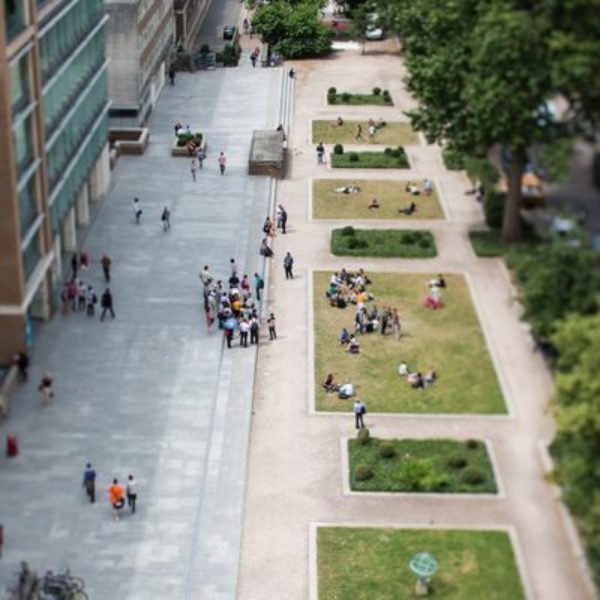
| Date | Author |
|---|---|
| 1st July 2019 | Graham Hill, SUMS Associate Consultant |
UK universities have seen significant investment in the built environment over the last decade to accommodate new students and programmes, but is this always the best way forward? With an increasingly demanding student population and tightening fiscal constraints, universities are having to consider the best way to deliver education - and that might not always be in the classroom. We look to universities in Scandinavia, and Norway in particular, to gain some insight on how universities can approach the Campus of the Future from a physical and virtual perspective.
The sun never sets in Trondheim at this time of year, and neither does the sharing of innovations at the European Congress of University Leaders (EUNIS), hosted in this stunning Scandinavian city. The Norwegian University of Science and Technology (NTNU), which played host to university leaders attending EUNIS from across Europe, was the prestigious back-drop for this year’s conference in June.
For many of us in the UK, we have observed a massive investment in bricks and mortar in the last decade. Institutions have used new buildings and facilities as an important element in the mix of benefits contributing to a positive student experience and presented to prospective students. In Scandinavia, however, they have been thinking differently. NTNU has become Norway’s largest single university, which is re-imagining itself after mega-mergers resulting from government policy to improve efficiency and effectiveness in the state-funded HE environment. There are no tuition fees for students to worry about; however, there are financial pressures to “do more with less”.
NTNU has embarked on a massive campus consolidation programme bringing everything together into Trondheim with a UniverCity strapline. At the same time, they are rolling out a smorgasbord of digital technologies to enhance the learning and teaching experience as curriculum elements move online. NTNU is also experimenting with new technologies in lab and classroom settings, which we saw first-hand as conference delegates.
There are certainly parallels between the pressures being felt at NTNU and those being felt by UK institutions. Here are a few brief examples of the Scandinavian approach to physical and virtual learning environments in response to similar challenges:
- Adopt a holistic approach to campus development that considers the wider city/town infrastructure
The holistic view of the student and staff experience at NTNU is exemplified by the consultation processes undertaken across city and region to attempt sustainable solutions to areas like campus travel. Trondheim just won a national award for its city cycling and electric cars and buses are everywhere. They are “designing-in” travel and remote learning activities into the masterplan.
- Consider innovative course delivery options that go beyond your own campus
NTNU is also experimenting with innovations such as the world’s first joint Masters programme in Music, Communication and Technology delivered in real-time between Oslo and Trondheim – making music in a cross-campus physical and virtual learning space. While this isn’t yet working as well as they hoped – it’s incredibly difficult to remove the latency between these locations, and have a truly immersive student experience – they are nevertheless pushing boundaries and opening up new possibilities.
- Use the structural resources you have before embarking on building projects
In the Netherlands, an international research group based at TU Delft showcased longitudinal research into European university campuses and buildings over the last 25 years. After a fire in 2008 totally destroyed the building where lead researcher Prof. Alexandre den Heijer worked, the research group’s theories were put to the test as the team created a new campus building for over 3000 students from an existing cultural building. You can read more about this fascinating project here.
This is not to say that UK universities are not pushing the boundaries of physical/virtual environment interplay as well. Closer to home, the UK has many examples of innovative campus thinking and Northampton University showcased its approach to active blended learning on its new £300M waterfront campus. The redesign of all its programmes for active blended learning ahead of the University’s move to its new location, which opened in September 2018, has enabled radical new approaches to space allocation and design with no lecture theatres or staff offices!
Over the next few years, will we see the UK taking more radical steps to consolidate university physical and virtual spaces like the Scandinavians? Government policy is driving change in Norway; however, there is also positivity and openness to that change. The Scandinavians have a reputation for being chilled-out and sophisticated but also for reliability – like my Volvo estate. The campuses they are designing for the future, for students who are not paying fees, is a model that challenges our current approaches in the UK and worthy of thought around the board table.








